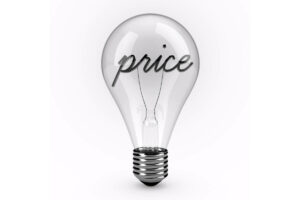by Amar Realtor | May 23, 2023 10:04 pm
Preparing Your House for a Successful Sale: A Comprehensive Checklist for Selling Success
Outline
Introduction
- Understanding the need to prepare your house for sale
- The Impact of well-prepared homes on buyer’s Choices
Decluttering Your House
- The importance of decluttering
- Steps to declutter effectively
Making Necessary Repairs and Improvements
- Identifying areas that need repairs
- Making cost-effective improvements
Enhancing the Curb Appeal
- Understanding the concept of curb appeal
- Practical tips to improve curb appeal
Professional Home Staging
- The role of professional home staging
- When to consider professional staging
Marketing and Advertising Your Home
- The importance of effective marketing
- Utilizing online platforms for wider reach
Setting the Right Price
- The Role of proper pricing in a successful sale
- How to determine the right price
Working with a Real Estate Agent
- Benefits of hiring a real estate agent
- Choosing the right agent
Preparing for Open Houses and Private Showings
- The significance of open houses and private showings
- How to prepare your home for these events
Negotiating Offers and Closing the Sale
- Understanding the negotiation process
- Tips to effectively negotiate and close the deal
Conclusion
- Recap and final tips
1. Introduction
Selling a house is more than just a transaction. It’s a complex process that requires time, effort, and a well-thought-out plan. Your home, after all, is probably one of the most significant assets you possess. It’s essential to prepare it effectively to ensure a successful sale. This article provides a comprehensive checklist to help you navigate the process.
Preparing your home for sale is crucial because it can significantly affect the buyer’s decision. A well-prepared home attracts potential buyers and can command a higher selling price. It’s all about making a good impression and helping prospective buyers imagine your house as their future home. So, let’s get started with our checklist.
2. Decluttering Your House
Decluttering is the first and arguably one of the most important steps in preparing your home for sale. A clutter-free home looks bigger, cleaner, and more appealing. It allows potential buyers to visualize their belongings in the space, offering them a canvas to imagine their future.
Decluttering isn’t merely about creating a sense of spaciousness. It’s also about creating an environment of potential, possibility, and a fresh start. When you declutter, you’re organizing your things and allowing the potential buyer to dream of a home free from the chaos of disarray. A clutter-free house sends a message that the property is well cared for.
Here’s a step-by-step guide to decluttering your home effectively:
Step 1: Assess Your Items
Start by going through each room and sorting items into four categories: keep, discard, donate, or sell. Take this time to assess the utility and sentimentality of each item. Remember, your goal is to make your home as attractive as possible to the widest range of buyers. So be ruthless and only keep what’s necessary.
Step 2: Dispose of Responsibly
After you’ve sorted through your belongings, it’s time to dispose of the items you no longer need. Recycle what you can donate to charity, or consider holding a garage sale for items in good condition. Disposing of things responsibly can help reduce waste, and you might even make some money from the items you sell.
Step 3: Organize What’s Left
Once you’ve decluttered, organize what remains. Your home should look neat, tidy, and well-maintained. Clever storage solutions can go a long way in achieving this. Store items out of sight where possible, and ensure every item has a specific “home”. Keep surfaces clean and minimalistic, and make sure furniture is arranged to maximize space.
Step 4: Maintain a Decluttered Space
The process doesn’t stop after one round of decluttering. Try to keep your space tidy and clutter-free until your house is sold. Be mindful of not accumulating new unnecessary items, and create a regular cleaning schedule to ensure your home remains in top condition.
Decluttering your home might seem monumental, but it’s worth it. A decluttered house is more attractive to potential buyers, and the process might even give you a sense of accomplishment and relief. After all, a clutter-free environment leads to a clutter-free mind.
Remember, every item removed enhances the potential buyer’s view of the available space, a critical factor in their decision-making process. So, invest your time and effort into decluttering and reaping the rewards that come with it.
3. Making Necessary Repairs and Improvements
 Once your house is decluttered, it’s time to address repairs and improvements. Leaving repairs undone could deter potential buyers, no matter how big or small. A home in excellent condition creates the impression that the property is well-maintained and cared for, significantly influencing buyer decisions.
Once your house is decluttered, it’s time to address repairs and improvements. Leaving repairs undone could deter potential buyers, no matter how big or small. A home in excellent condition creates the impression that the property is well-maintained and cared for, significantly influencing buyer decisions.
Step 1: Conduct a Thorough Inspection
Walk through your home, room by room, and make a list of things that need fixing. Pay particular attention to areas like leaky faucets, peeling paint, broken tiles, or faulty light switches. These seemingly small issues can be a major turnoff for prospective buyers.
Don’t forget to check your home’s exterior. Roof issues, broken gutters, cracked driveways, or malfunctioning garage doors are all potential red flags for buyers.
Step 2: Prioritize Your Repairs
With your list in hand, prioritize the repairs based on their impact on the buyer’s first impression and their potential to disrupt a sale. Some repairs, like fixing a leaky roof or addressing plumbing issues, can’t be ignored. Others, like replacing an old carpet or fixing a broken tile, might be subjective and based on your budget and time.
Step 3: Consider Making Improvements
While not every home needs significant improvements before selling, making a few strategic updates could be beneficial. Kitchen and bathroom updates tend to provide a good return on investment. This could be as simple as updating fixtures or as complex as a full remodel, depending on your budget and the current state of your home.
Fresh paint, professionally cleaned carpets, and updated landscaping can make a huge difference. Remember, the aim is to make your home as appealing as possible to potential buyers.
Step 4: Hire Professionals If Needed
Unless you’re skilled in home repairs, hiring professionals for larger jobs might be best. A botched DIY job can be more noticeable and detrimental than no repair. While hiring a professional might cost more upfront, it can save you time, effort, and potential issues.
Preparing your home for sale isn’t always easy, but addressing necessary repairs and improvements can make a significant difference. Buyers will appreciate a home that’s been well-cared for, and you’re likely to see this reflected in their offers.
4. Enhancing the Curb Appeal
The exterior of your house often creates the first impression for potential buyers. That’s where the concept of curb appeal comes in. A well-maintained, appealing body can attract more buyers and significantly affect your home’s perceived value. Here are some steps to enhance your home’s curb appeal:
Step 1: Clean and Tidy Up
Start by cleaning your yard. Remove any debris, fallen branches, leaves, or clutter. Regularly mow the lawn and trim overgrown shrubs or hedges to maintain a neat and orderly appearance. Power washing your home’s exterior, walkways, and driveway can also remove dirt or grime and significantly improve the overall look.
Step 2: Add Greenery and Flowers
Adding plants and flowers can immensely boost your home’s curb appeal. Consider planting a garden or adding hanging flower baskets or pots near your entrance. Consider a vertical garden or hanging baskets if you have a small yard. Use mulch in garden beds to give a fresh, well-maintained look.
Step 3: Maintain the Pathways and Driveway
Ensure all paths and your driveway are in good condition. Repair any cracks or breaks and clean any stains or moss build-up. If you have stone paths, ensure they’re even and stable. During winter, keep the pathways and driveway clear of snow and ice.
Step 4: Refresh the Front Door
The front door can be a focal point of your home’s exterior. Make sure it’s in good condition, and consider giving it a fresh coat of paint if it’s looking worn. A bold color can make it stand out, while a more neutral shade can contribute to a sophisticated and polished look. Ensure the door handles and locks function properly, and consider adding a welcoming touch like a new doormat or wreath.
Step 5: Invest in Good Lighting
Proper exterior lighting is crucial not only for safety but also for enhancing your home’s curb appeal. Good lighting can highlight your home’s best features and create a warm, welcoming glow. Ensure the entrance is well-lit, and consider adding landscape lighting to highlight pathways or specific landscaping features.
Step 6: Don’t Forget the Mailbox
If your mailbox is on the curb, ensure it matches your home’s exterior and isn’t worn out or rusty. It’s a small detail that can contribute to the overall curb appeal.
Enhancing your home’s curb appeal may require time and effort, but the payoff can be significant. Remember, first impressions matter. The more appealing your home looks, the more interested potential buyers will be in seeing the inside.
5. Professional Home Staging
 Home staging is a strategy sellers use to make their homes more appealing to potential buyers. It involves using interior design principles to highlight your home’s strengths, downplay its weaknesses, and appeal to the broadest possible audience. While it’s possible to do this yourself, hiring a professional home stager can bring expertise and an objective eye to enhance your home’s appeal significantly.
Home staging is a strategy sellers use to make their homes more appealing to potential buyers. It involves using interior design principles to highlight your home’s strengths, downplay its weaknesses, and appeal to the broadest possible audience. While it’s possible to do this yourself, hiring a professional home stager can bring expertise and an objective eye to enhance your home’s appeal significantly.
Step 1: Understanding the Benefits of Home Staging
Home staging can significantly affect how quickly you sell your home and the price you get for it. A well-staged home can help buyers visualize themselves living in the space, creating an emotional connection that can influence their buying decision. Staged homes also tend to photograph better, making your online listing more appealing.
Step 2: Hiring a Professional Home Stager
Hiring a professional home stager typically involves some research. Look for a reputable home stager with good reviews and a portfolio you like. They should have a good understanding of the real estate market and the buyers in your area. The cost of home staging varies depending on the size of your home and the amount of work needed, but keep in mind that the potential increase in your selling price can often offset these costs.
Step 3: Preparing for the Home Staging Consultation
Before the home stager visits your home for the consultation, ensure your home is clean and decluttered. The stager will walk through your home, taking note of its strengths and weaknesses. They’ll recommend how to make your home more appealing to buyers. This might involve rearranging furniture, changing the decor, or even bringing in rented furniture to suit the space better.
Step 4: Implementing the Home Stager’s Recommendations
Once the home stager provides its recommendations, it’s time to implement them. This might involve time and effort, but remember that the goal is to make your home appeal to as many potential buyers as possible. This could mean depersonalizing the space, removing or adding furniture, adding decorative elements, or changing the layout of rooms.
Step 5: Maintaining the Staged Home
After your home is professionally staged, keeping it in that condition for showings is crucial. This might involve extra cleaning and tidying, especially if you still live in the home while it’s on the market.
In conclusion, while hiring a professional home stager involves an additional cost, it can often be a worthwhile investment. A well-staged home can stand out in the real estate market, potentially leading to quicker sales and higher offers. Creating an appealing, welcoming environment helps potential buyers visualize your house as their future home.
6. Marketing and Advertising Your Home
Now that your house is decluttered, repaired, beautified, and staged, it’s time to showcase it to potential buyers. Effective marketing and advertising are key to reaching a wide audience and attracting interested buyers.
Step 1: High-Quality Professional Photographs
Your home’s online listing is usually the first point of contact between your property and potential buyers, and high-quality, professional photographs are essential. These images should highlight your home’s best features and the results of the staging process. Consider hiring an experienced real estate photographer who understands how to make rooms look their best using the right lighting and angles.
Step 2: Virtual Tour or Video Walkthrough
In our increasingly digital era, providing a virtual tour or video walkthrough of your home can significantly increase its appeal. A 3D virtual tour lets buyers explore your home at their own pace, getting a feel for the layout and flow. Meanwhile, a video walkthrough, possibly with narration, can highlight features that might not be apparent in photos.
Step 3: Craft an Appealing Description
While pictures can speak a thousand words, a well-written, compelling description of your property is equally important. Highlight your home’s best features, recent upgrades, and the benefits of its location. The aim is to create a narrative that helps potential buyers imagine the lifestyle they could enjoy in your home.
Step 4: Use Multiple Channels
Leverage multiple channels to advertise your home. This could include online real estate portals, social media platforms, printed materials like flyers and brochures, and word-of-mouth. The more exposure your house gets, the higher the chances of finding the right buyer.
Step 5: Work with a Real Estate Agent
Working with a real estate agent can significantly boost your marketing efforts. An experienced agent will have an in-depth understanding of the market and access to resources to help market your home effectively. They can advise you on the best strategies for your situation and handle many aspects of the selling process.
Step 6: Host Open Houses and Private Viewings
Hosting open houses can attract many potential buyers in a short period. It allows buyers to explore your home in a low-pressure environment. Private viewings, on the other hand, can give serious buyers a more personal, detailed look at your property. Be prepared to be flexible to accommodate interested parties.
In conclusion, effective marketing and advertising are crucial for a successful home sale. The goal is to make your home irresistible and to reach as many potential buyers as possible. With the right strategies and some effort, you’ll increase your chances of finding the perfect buyer for your home.
7. Setting the Right Price
 Determining the right price is one of the most critical aspects of selling your home. The ideal price will attract buyers, allow you to compete effectively, and maximize your return. Here’s a step-by-step guide to help you set the right price for your home:
Determining the right price is one of the most critical aspects of selling your home. The ideal price will attract buyers, allow you to compete effectively, and maximize your return. Here’s a step-by-step guide to help you set the right price for your home:
Step 1: Understand the Market
Real estate markets fluctuate based on factors such as the economy, mortgage interest rates, and the balance of supply and demand. Understand whether it’s currently a buyer’s market (more homes for sale than buyers), a seller’s market (more buyers than homes for sale), or a balanced market.
Step 2: Research Comparable Sales
Look at recent sales of similar homes in your neighborhood, also known as comparables or “comps”. These should be homes with similar sizes, conditions, ages, and features. Real estate websites often provide this information, or a real estate agent can help you find it.
Step 3: Adjust for Differences
No two homes are exactly alike. You might need to adjust your price if there are differences between your home and the comps. For example, if your home has one less bathroom than a recently sold comparable home, you may need to lower your price.
Step 4: Consider Market Trends
If the real estate market is heating up and prices are rising, you might be able to price your home slightly higher. On the other hand, if the market is cooling down, you might need to price your house more competitively to attract buyers.
Step 5: Be Objective
It’s easy to let emotions get in the way when pricing your home. After all, your home likely holds a lot of memories. However, it’s crucial to remain objective and not overprice your home based on sentimental value.
Step 6: Consult with a Real Estate Professional
Real estate agents or professional appraisers can provide a more detailed and accurate assessment of your home’s value based on their experience and understanding of the local market. While there may be a cost associated with their services, their expertise can help you price your home effectively.
Setting the right price for your home can be a complex process, but it’s crucial for attracting buyers and ensuring you get the maximum return on your investment. By understanding the market, researching comparable sales, and consulting with a real estate professional, you can set a competitive and fair price for your home.
8. Working with a Real Estate Agent
Working with a real estate agent can be a major asset when selling your home. An experienced agent brings market knowledge, negotiation skills, and a network of potential buyers. However, finding and working effectively with a real estate agent requires some steps:
Step 1: Finding the Right Agent
Choosing the right agent is a critical first step. Look for an agent with a proven track record of successful sales, preferably in your area. Consider their reviews, how long they’ve been in the business, their understanding of the local market, and their ability to communicate effectively. Personal recommendations can be invaluable, and don’t hesitate to interview multiple agents before deciding.
Step 2: Establishing Clear Communication
Effective communication with your agent is crucial. Ensure you discuss how often and what means you’ll be in contact. Whether it’s email, phone calls, or text messages, be sure both parties are comfortable with the arrangement.
Step 3: Setting Expectations
Clearly express your goals, timeline, and any concerns you might have to your agent. The more they understand what you hope to achieve, the better they can help you meet those goals. Be clear about your expectations regarding the listing price, marketing efforts, and how showings should be handled.
Step 4: Understanding Your Agreement
You’ll likely sign a listing agreement when you hire a real estate agent. This contract outlines the terms of your arrangement, including the agent’s commission, the length of the agreement, and the listing price. Ensure you fully understand this agreement and clarify any confusion with your agent or a legal professional.
Step 5: Trusting Their Expertise
Once you’ve chosen an agent, it’s important to trust their expertise. While you may not always agree with their suggestions, remember that they’re professionals with a deep understanding of the market. They have your best interests in mind and aim to get you the best possible price for your home.
Step 6: Keeping an Open Line of Communication
Throughout the process, keep the lines of communication open. If you have questions, concerns, or circumstances change, let your agent know. Similarly, expect your agent to update you regularly about progress, showings feedback, and market changes.
Working with a real estate agent can make selling your home much smoother and more efficient. Their expertise and network can be invaluable in navigating the market and ensuring you get the best possible outcome from your home sale.
9. Preparing for Open Houses and Private Showings
 Once your home is on the market, you must be prepared for open houses and private showings. This is when potential buyers can view your home in person, so it’s crucial that your home makes the best impression. Here’s how you can prepare:
Once your home is on the market, you must be prepared for open houses and private showings. This is when potential buyers can view your home in person, so it’s crucial that your home makes the best impression. Here’s how you can prepare:
Step 1: Keep Your Home Clean and Tidy
Your home should be spotless for viewings. This includes a thorough cleaning and ensuring all rooms are tidy and free of clutter. Clean windows, wipe down surfaces, vacuum and mop floors, and make sure bathrooms and the kitchen are sparkling clean.
Step 2: Keep the Decor Neutral
While your home may be staged to a certain degree, keeping the decor neutral can help potential buyers visualize themselves living in your home. Remove any personal items, such as family photos or personal mementos.
Step 3: Light Up Your Home
Lighting can dramatically impact how your home feels. Ensure all lights work, replace burned-out bulbs, and use a warm glow to create a welcoming environment. Open all curtains and blinds during daytime showings to let in as much natural light as possible.
Step 4: Control Odors
You may not notice the familiar smells in your home, but potential buyers will. Avoid cooking strong-smelling foods before viewings, and remove any potential sources of bad odors (like trash or dirty laundry). Consider airing out your home or using subtle air fresheners to create a pleasing aroma.
Step 5: Create a Welcoming Atmosphere
Small touches can make a big difference in creating a welcoming atmosphere. Soft music, a pitcher of lemonade or cookies on the kitchen counter, and fresh flowers in the living room – all things that can make potential buyers feel welcome and at home.
Step 6: Make Necessary Arrangements for Pets
If you have pets, arrange for them to be elsewhere during open houses or showings. Not everyone is a pet lover; you want to avoid potential complications or distractions.
Step 7: Leave During Showings
Potential buyers often feel more comfortable and spend more time in a house when the owner isn’t present. Plan to be away from your home during open houses and private showings.
Open houses and private showings can be crucial in attracting a potential buyer for your home. Creating a clean, inviting, and neutral environment can help buyers envision themselves living in your home, bringing you one step closer to a successful sale.
10. Negotiating Offers and Closing the Sale
After all the hard work of preparing your home and showcasing it to potential buyers, you will likely start receiving offers. Navigating negotiations and closing the sale is a critical stage in the selling process. Here’s how you can handle it:
Step 1: Reviewing Offers
Each offer you receive will include the buyer’s proposed purchase price, their financing details, and any contingencies (conditions that must be met for the sale to proceed). Contingencies can include the results of a home inspection, the buyer’s ability to secure a mortgage, or the sale of their current home. Review each offer carefully, considering both the price and the terms.
Step 2: Responding to Offers
Upon receiving an offer, you have three choices: accept, reject, or make a counteroffer. If the request is close to what you’re looking for but not quite there, you might make a counteroffer with modified terms. If you’re in a competitive market with multiple offers, you can select the best one or leverage the competition to see if any buyers are willing to improve their offers.
Step 3: Negotiating with the Buyer
Negotiating a home sale can be complex, as you’ll need to agree on the price, the closing date, and contingencies. Working with a real estate agent during this process is often a good idea, as they can provide advice and handle negotiations on your behalf.
Step 4: Signing the Purchase Agreement
Once you and the buyer agree on the terms, you’ll sign a purchase agreement. This legally binding contract outlines the specifics of the sale, including the agreed-upon price, the closing date, and any contingencies. Review this document carefully and consult with a real estate attorney if you have any questions or concerns.
Step 5: Navigating the Closing Process
The buyer typically arranges a home inspection and an appraisal during the closing process. You must make your home available for these and address any issues. Once all contingencies are met, you’ll move toward the final stages of the sale.
Step 6: Closing the Sale
The closing or settlement is when ownership of the home officially transfers to the buyer. You’ll need to prepare for this by arranging to move out of your home (if you haven’t already) and ensuring it’s clean and in the agreed-upon condition. You’ll sign all necessary paperwork at the closing meeting, hand over the keys, and receive the payment.
Selling a home involves numerous steps and a fair bit of negotiation, but by understanding the process and working with a professional, you can navigate it successfully. It’s a rewarding journey that, with careful planning and execution, will lead you to a successful sale and the start of your next chapter.
Conclusion
Selling your home is a significant event that involves careful preparation, strategic marketing, skillful negotiation, and thoughtful decision-making. While it might seem daunting, the process can be broken down into manageable steps.
From decluttering and repairing your house to enhancing its curb appeal and staging it professionally, you’re setting the stage for potential buyers to envision themselves living there. Marketing and advertising your home effectively can increase its visibility to a wider audience, maximizing your chances of attracting serious buyers.
One of the most critical aspects of selling your home is setting the right price. This involves understanding the real estate market in your area, researching comparable sales, and possibly consulting with a real estate professional. Another key factor is working with a real estate agent. An experienced agent can bring market knowledge, negotiation skills, and a network of potential buyers.
Preparing for open houses and private showings involves maintaining a clean, tidy home, neutral decor, and a welcoming atmosphere. Finally, negotiating offers and closing the sale consists in reviewing and responding to requests, signing a purchase agreement, and navigating the closing process.
While selling a home can be challenging, it can also be a rewarding experience. By preparing adequately, understanding the process, and working with experienced professionals, you can ensure a successful sale and begin the next chapter in your life.
To learn more details, let’s talk with Amar REALTOR®.
Let’s schedule a meeting with Amar REALTOR to review all your Real Estate objectives at a time that works for you.
 Please Click the link below to schedule a time on my online calendar!
Please Click the link below to schedule a time on my online calendar!
https://www.amarrealtor.com/meetingwithamarrealtor/
Contact Amar REALTOR® today for more information about Buying/Selling a Home in the Bay Area!
Amar REALTOR® offers expert Real Estate services with proven results in Bay Area Housing Market, including Homes for sale in Santa Clara County, San Mateo County, Contra Costa County, and Alameda County.
More Interesting Information about Bay-Area Real Estate
Don’t Get Burned: The Risks of Hiring Unlicensed Contractors
The Dangers of Hiring Unlicensed Contractors: Protecting Your Home and Finances
Unlicensed Contractors: Why They’re a Risk You Can’t Afford to Take?
The Hidden Costs of Hiring Unlicensed Contractors for Home Improvement Projects
First-Time Homebuyers: Types Of Mortgages
Renting vs. Buying – Which Is Better?
The Risks of Unlicensed Contractors
First-Time Homebuyers: What You Need To Know Before Relocating?
Source URL: https://www.amarrealtor.com/real-estate-news/preparing-your-house-for-a-successful-sale-a-comprehensive-checklist-for-selling-success/